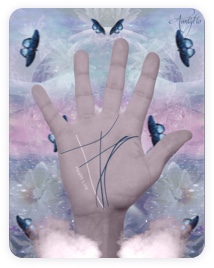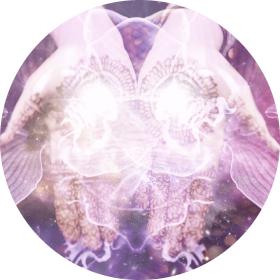Learn How To Time Travel

Have you ever day dreamed about what your life might have been like if you had taken a different path in life?
If you had studied something different, or accepted a different job, or pursued a different career? If you had been a painter instead of an accountant? If you had never given up the violin? If you had stayed with that high school sweetheart? These questions may not be hypothetical. According to quantum physics, these things may have happened – may still be happening, right now – and it may be possible for each of us to “step into” those parallel realities, through a metaphysical process known as “quantum jumping.”
Quantum physics is the study of the behavior of the smallest particles in the Universe, but in a broader sense, it is a new development in the philosophy of the Universe as a whole. At the quantum level, anything is possible – even the highly improbable. As physicist Brian Cox puts it, “A key feature of quantum theory [is that] it deals with probabilities rather than certainties, not because we lack absolute knowledge, but because some aspects of Nature are, at their very heart, governed by the laws of chance.”
In other words, every possible scenario of the Universe exists as a probability. You probably won't win the lottery in the next five minutes, but according to quantum theory, the timeline of the Universe in which you do, does exist, and does happen. This probability becomes stronger, of course, if you actually bought a lottery ticket this morning. And that, in turn, becomes more probable if you went to the corner store; which is more probable if you did not oversleep; and so on. Quantum theory states that each of these “branches” in the “tree of possibility” exist, at some level, in the fabric of the Universe at this very moment.
Quantum jumping is the ability to leap metaphorically, like a monkey in a tree, from one possible branch of your life to another. It is achieved through meditation, and channeling the power of your mind – through focusing belief. By believing that your parallel realities exist, and buttressing that belief with the solid science of quantum physics, it is possible to harness that alternate timeline, and bring its energies into your own life.
Does this mean that you can instantly become Picasso or Lady Gaga if you simply believe that you can? Not exactly. But through quantum jumping, it is possible to bring your current physical reality closer to the metaphysical realities that also-are – to bridge the divide, and to “bend” your current physical timeline towards that alternate reality. It is possible to make those other realities more real.
As with many metaphysical exercises, the first step is meditation. Just as a painting is best begun on the clean, even surface of an untouched canvas, the first step in “painting your own reality” is to pacify your mind. The rippled surface of water yields a distorted reflection; before reflecting on ourselves, we must make our minds as still as a pond on a windless day.
There are many books entirely devoted to the Art of meditation. Here are some general guidelines, however, for beginning to master your mind.
When meditating, posture is incredibly important. Our bodies are essentially biochemical machines, and our mental state is largely affected by the flow of electricity through our body. To this end, perhaps the most important aspect of the physical body while meditating, other than breathing, is the orientation of the spine in relation to the rest of the body. The spine should be straight while meditating, so that energy flows unimpeded vertically along the spinal column. A good, easy way to achieve this is to sit on the edge of a straight-backed chair, feet flat on the ground, and envision your vertebrae as a stack of gold coins. Would the coins at the top of the stack fall off? Try to correct your posture with this metaphor in mind. Rest your palms on your knees so that your arms are relaxed. Close your eyes. Then, it's time to focus on your breathing.
Respiration is vitally important to meditation because it is one of the major rhythmic forces of our body which we can consciously control. Techniques vary, but just as with your posture, a metaphor can help you achieve a healthy rhythm. One effective technique is to imagine your breathing in a circular fashion, like a water wheel on a river. Inhaling is like the wheel carrying water up; exhaling is like the empty buckets of the wheel traveling back down to the river. With each breath, “carry” air into your lungs, through your nose. Pause briefly at the “top of the wheel,” then exhale through your mouth. Breathe with your diaphragm (focus on the movement of your belly). Be patient – try to maintain a steady breathing rhythm for at least ten minutes. Seek equilibrium; find a pace you can maintain. Silently count every time you exhale. Try not to lose count; try not to let your mind wander. You can also try watching the flame of a candle – this can help you maintain mental focus.
Now, imagine yourself doing this very same thing within the alternate timeline you wish to experience. Imagine yourself as that painter, or that musician, or that business mogul. That person might be doing the very thing you're doing now, and according to quantum physics, there already exists a reality where he or she is indeed doing it. Become that person in your mind. Imagine all the circumstances of your (alternate) life which led you to this time of meditation.
Envision your place, your achievements, your daily routine as that person – because you are that person. Imagine that you are meditating before going on stage for the biggest gig of your life, or before the largest business merger you've ever attempted. Don't get too creative: instead, be realistic with what you imagine. No life is ever perfect! Even that famous you, that alternatively-successful you, will have worries, problems, and causes of stress. Be realistic, even as you explore your alternate realities. Be optimistic, but keep your imaginations grounded in reality: this will tether your experience to a reality that is more probable, and therefore more real.
And remember, the person you're imagining is you. That you does exist. And the more you believe it, and the more you ground that belief in scientific fact and mental discipline, the more real that existence can become.
By Florance Saul
Mar 28, 2012







